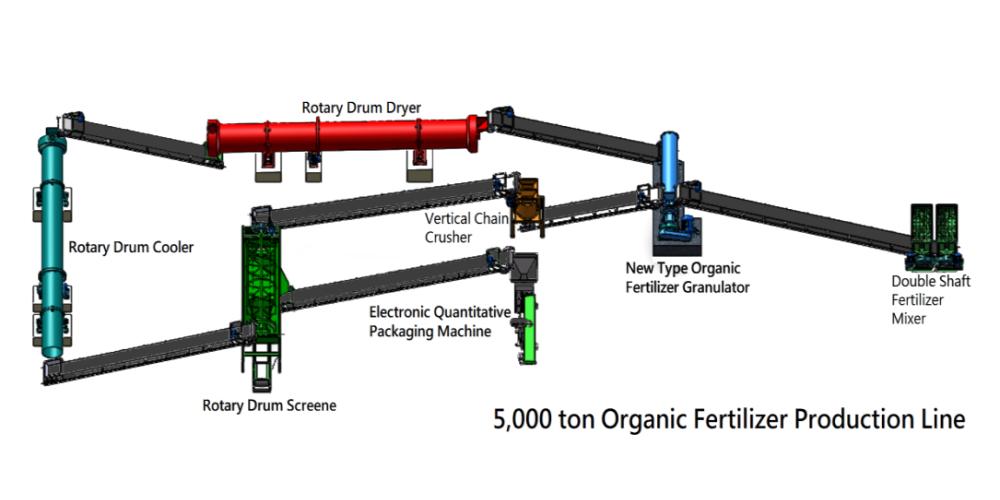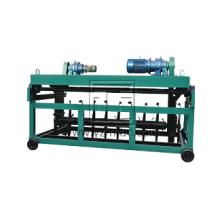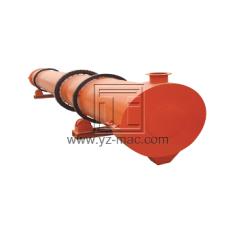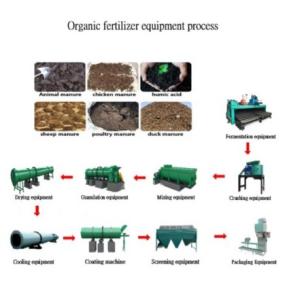Fertilizer blender
A fertilizer blender, also known as a fertilizer mixing machine, is a specialized equipment designed to blend different fertilizer components into a homogeneous mixture. By ensuring even distribution of nutrients and additives, the fertilizer blender plays a crucial role in achieving consistent fertilizer quality.
Fertilizer blending is essential for several reasons:
Nutrient Uniformity: Different fertilizer components, such as nitrogen, phosphorus, and potassium, have varying nutrient concentrations. Through blending, a fertilizer blender helps achieve uniform distribution of these nutrients, ensuring that each granule or batch of fertilizer contains a consistent nutrient composition.
Customized Nutrient Ratios: Fertilizer blending allows for the customization of nutrient ratios to meet specific crop requirements. By adjusting the proportions of different fertilizer components, farmers and agronomists can tailor the fertilizer blend to suit the nutrient needs of various crops and soil conditions.
Enhanced Efficiency: A homogeneous fertilizer blend ensures that each granule contains a balanced nutrient profile. This promotes consistent nutrient uptake by plants, minimizing nutrient deficiencies or excesses and optimizing fertilizer efficiency.
Working Principle of a Fertilizer Blender:
A fertilizer blender typically consists of a blending chamber or hopper equipped with rotating blades or paddles. The fertilizer components are added to the chamber, and the blending mechanism evenly distributes and mixes the materials. The rotation of the blades or paddles ensures thorough blending, creating a homogeneous fertilizer mixture.
Applications of Fertilizer Blenders:
Agricultural Fertilizer Production: Fertilizer blending is widely used in the manufacturing of agricultural fertilizers. Fertilizer manufacturers blend various nutrient sources, including synthetic fertilizers, organic amendments, and micronutrients, to produce customized fertilizer formulations for different crops and soil conditions.
Custom Blends for Specific Crops: Fertilizer blending allows for the creation of custom fertilizer blends tailored to the nutrient requirements of specific crops. By adjusting the nutrient ratios, micronutrient content, and other additives, farmers can optimize fertilization strategies and achieve optimal crop yield and quality.
Soil Amendment Production: Fertilizer blending is also employed in the production of soil amendments, such as organic fertilizers, compost-based fertilizers, and biofertilizers. By blending organic materials, such as compost, manure, and plant residues, with mineral fertilizers, the nutrient content can be enhanced, creating balanced soil amendment products.
Specialty Fertilizer Formulations: Fertilizer blending enables the creation of specialty fertilizer formulations for unique agricultural applications. This includes slow-release fertilizers, controlled-release fertilizers, and specialty blends tailored for specific soil types, crops, or environmental conditions.
A fertilizer blender is a vital tool in achieving homogeneous fertilizer mixtures, ensuring nutrient uniformity and customized nutrient ratios. By blending different fertilizer components, a fertilizer blender promotes consistent nutrient distribution, optimizing fertilizer efficiency and crop performance. Fertilizer blending finds applications in agricultural fertilizer production, custom blends for specific crops, soil amendment production, and specialty fertilizer formulations.








